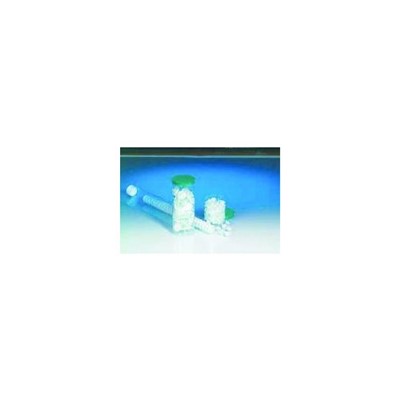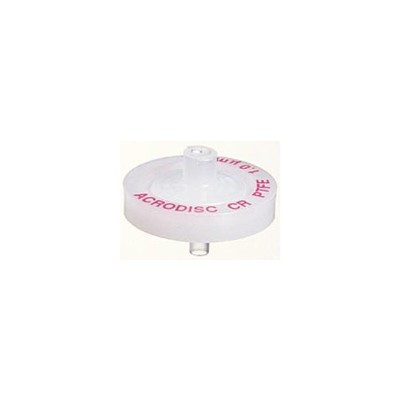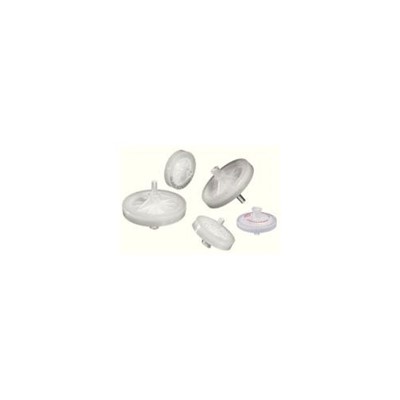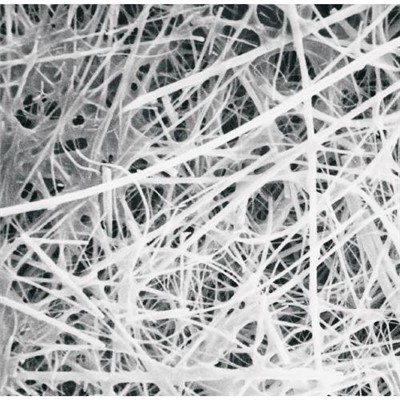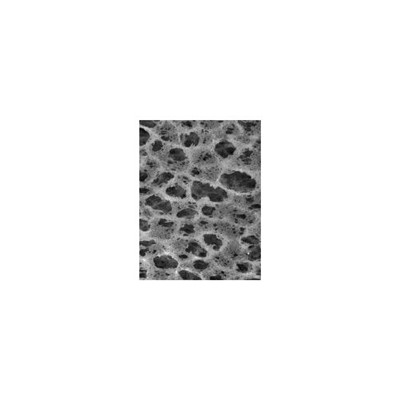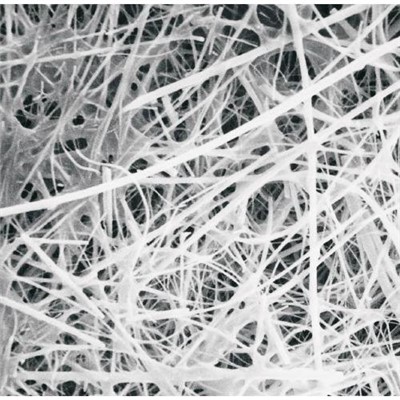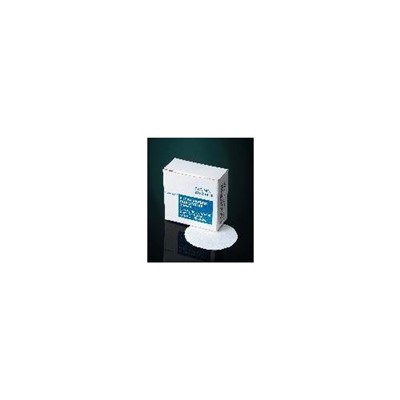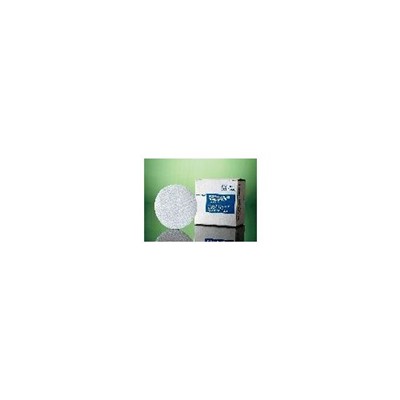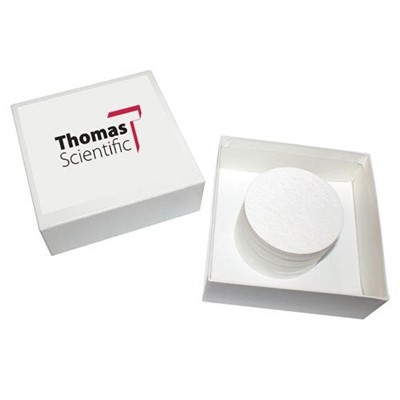Search Results
Searching for: {0}
Viewing Page 1 of 3
(22 results)
Filter GFX/Nylon 0.2um Acrodisc
Item #:
VAN/97027-940
Supplier #: 97027-940
Supplier #: 97027-940
Pall Laboratory
Mfg Item # : AP-4788
Acrodisc PSF Syringe FilteR GxF prefilter over Nylon membrane. 0.2um.1000 filters per box.
Exact Match: 97027-940
Mfg Item # : AP-4788
Acrodisc PSF Syringe FilteR GxF prefilter over Nylon membrane. 0.2um.1000 filters per box.
Exact Match: 97027-940
Acrodisc Filters 0.45um 25mm
Item #:
VAN/28144-584
Supplier #: 28144-584
Supplier #: 28144-584
Pall Laboratory
Mfg Item # : 4501
Acrodisc* Syringe Filter, 25mm 0.45um. Hydrophobic PTFE membrane for exceptional chemical and temperature compatibility. HPLC certified for low level UV-absorbing extractables. Polypropylene housing. Female Luer-Lok* inlet, standard male slip Luer outlet.
Exact Match: 28144-584
Mfg Item # : 4501
Acrodisc* Syringe Filter, 25mm 0.45um. Hydrophobic PTFE membrane for exceptional chemical and temperature compatibility. HPLC certified for low level UV-absorbing extractables. Polypropylene housing. Female Luer-Lok* inlet, standard male slip Luer outlet.
Exact Match: 28144-584
Glass Fiber Filter 1.0um 25mm pk/1000
Item #:
VAN/34181-092
Supplier #: 34181-092
Supplier #: 34181-092
Pall Laboratory
Mfg Item # : 4529
Glass Fiber Membrane Filter 25mm diameter. 2.8cm2 filtration area. Prefilters aqueous and solvent based samples. 100% binder-free borosilicate glass fiber filter. Low extractables. Polypropylene housing. Female Luer-Lok* inlet. Male slip Luer outlet. 1.0um nominal pore size. 1000/pk.
Exact Match: 34181-092
Mfg Item # : 4529
Glass Fiber Membrane Filter 25mm diameter. 2.8cm2 filtration area. Prefilters aqueous and solvent based samples. 100% binder-free borosilicate glass fiber filter. Low extractables. Polypropylene housing. Female Luer-Lok* inlet. Male slip Luer outlet. 1.0um nominal pore size. 1000/pk.
Exact Match: 34181-092
Filter Glass 0.5M 25MM PK 100
Item #:
TMS/4749A04
Supplier #: 4749A04
Supplier #: 4749A04
GVS Filter Technology Part No. 1215544
Extend the life of final filters Pore sizes from 0.5 µm to 1.0 µm With or without binders Autoclavable PreSep prefilters are biologically inert and highly resistant to oxidizing agents and weak acids. Primarily used to extend the life of a final filter, they can also be used as a low-cost sample clarifier. Prefilters increase the speed of filtration by trapping large particles before they reach the final membrane filter. Frequency and cost of replacing the final membrane filters is reduced. Filters with binders are composed of borosilicate glass fibers woven into a porous matrix and bonded by an acrylic resin. The resulting filter reduces media migration and has the strength required for high-volume aqueous filtrations. Maximum operating temperature is 165°C (325°F). Glass prefilters without binders are designed to avoid binder extractables during solvent filtration or gravimetric analysis. Not recommended for temperatures exceeding 510°C (950°F). For upstream protection of a membrane within a filter holder, the use of a prefilter that is slightly smaller in diameter than the main filter allows the prefilter to fit inside the O-ring or filter funnel holder seal, ensuring a positive membrane seal. When used as the main filter medium, select a diameter of the same size as the filter holder to be used. Type G15 Glass Fiber Prefilters with Binders (4749A02 to A14) Nominal pore size- 0.5 µm High rentention efficiency Limited dirt-handling capacity Protection of 0.2 µm to 0.8 µm final filters Type G20 Glass Fiber Prefilters with Binders (4749A20 to A32) Nominal pore size- 1.0 µm Surface capture of particles Average retention efficiency Higher dirt-handling capacity Protection of 0.8 µm and larger pore size final filters Type G25 Glass Fiber Prefilters with Binders (4749A40 to A54) Nominal pore size- 1.0 µm Thickness approximately 3.5 times greater than G20 Depth particle capture Average retention efficiency Highest dirt-handling capacity Recommended for solutions with heavy contaminate loads Protection of 0.8 µm and larger pore size final filters Type G40 Glass Fiber Prefilters WITHOUT Binders (4638D60 to D68) Nominal pore size- 1.0 µm Average retention efficiency Highest dirt-handling capacity Recommended for solvent filtration, gravimetric analysis, contamination analysis of wastewater and industrial effluents TCLP Glass Fiber Filters WITHOUT Binders, 0.7 µm Pore Size (4749A72) Borosilicate glass fiber filters designed for use in U.S. EPA Method 1311 Toxicity Characteristic Leaching Procedure (TCLP). Federal regulations require the filters for this application be made of borosilicate glass fiber, contain no binder materials and have an effective pore size of 0.6 to 0.8 microns. GE TCLP glass fiber filters have a pore size of 0.7 microns and are binder free. They are used in Zero-Headspace Extractor Vessels for determining the mobility of semi-volatiles. Filters should be acid washed prior to use with 1N nitric acid followed by three consecutive rinses with deionized water. A minimum of 1 liter per rinse is recommended.
Extend the life of final filters Pore sizes from 0.5 µm to 1.0 µm With or without binders Autoclavable PreSep prefilters are biologically inert and highly resistant to oxidizing agents and weak acids. Primarily used to extend the life of a final filter, they can also be used as a low-cost sample clarifier. Prefilters increase the speed of filtration by trapping large particles before they reach the final membrane filter. Frequency and cost of replacing the final membrane filters is reduced. Filters with binders are composed of borosilicate glass fibers woven into a porous matrix and bonded by an acrylic resin. The resulting filter reduces media migration and has the strength required for high-volume aqueous filtrations. Maximum operating temperature is 165°C (325°F). Glass prefilters without binders are designed to avoid binder extractables during solvent filtration or gravimetric analysis. Not recommended for temperatures exceeding 510°C (950°F). For upstream protection of a membrane within a filter holder, the use of a prefilter that is slightly smaller in diameter than the main filter allows the prefilter to fit inside the O-ring or filter funnel holder seal, ensuring a positive membrane seal. When used as the main filter medium, select a diameter of the same size as the filter holder to be used. Type G15 Glass Fiber Prefilters with Binders (4749A02 to A14) Nominal pore size- 0.5 µm High rentention efficiency Limited dirt-handling capacity Protection of 0.2 µm to 0.8 µm final filters Type G20 Glass Fiber Prefilters with Binders (4749A20 to A32) Nominal pore size- 1.0 µm Surface capture of particles Average retention efficiency Higher dirt-handling capacity Protection of 0.8 µm and larger pore size final filters Type G25 Glass Fiber Prefilters with Binders (4749A40 to A54) Nominal pore size- 1.0 µm Thickness approximately 3.5 times greater than G20 Depth particle capture Average retention efficiency Highest dirt-handling capacity Recommended for solutions with heavy contaminate loads Protection of 0.8 µm and larger pore size final filters Type G40 Glass Fiber Prefilters WITHOUT Binders (4638D60 to D68) Nominal pore size- 1.0 µm Average retention efficiency Highest dirt-handling capacity Recommended for solvent filtration, gravimetric analysis, contamination analysis of wastewater and industrial effluents TCLP Glass Fiber Filters WITHOUT Binders, 0.7 µm Pore Size (4749A72) Borosilicate glass fiber filters designed for use in U.S. EPA Method 1311 Toxicity Characteristic Leaching Procedure (TCLP). Federal regulations require the filters for this application be made of borosilicate glass fiber, contain no binder materials and have an effective pore size of 0.6 to 0.8 microns. GE TCLP glass fiber filters have a pore size of 0.7 microns and are binder free. They are used in Zero-Headspace Extractor Vessels for determining the mobility of semi-volatiles. Filters should be acid washed prior to use with 1N nitric acid followed by three consecutive rinses with deionized water. A minimum of 1 liter per rinse is recommended.
Nylaflo® Membrane Filter, 0.2 µm, 25mm
Item #:
VAN/28140-028
Supplier #: 28140-028
Supplier #: 28140-028
Pall Laboratory
Mfg Item # : 66601
Nylaflo* Membrane Disc Filter 0.2um pore. 25mm diameter. Hydrophilic nylon filter compatible with esters, bases, alcohols. Not for acids
Exact Match: 28140-028
Mfg Item # : 66601
Nylaflo* Membrane Disc Filter 0.2um pore. 25mm diameter. Hydrophilic nylon filter compatible with esters, bases, alcohols. Not for acids
Exact Match: 28140-028
Glass Fiber Filter 0.7um 47mm pack/100
Item #:
TMS/4749A72
Supplier #: 4749A72
Supplier #: 4749A72
GVS Filter Technology Part No. 1215540
Extend the life of final filters Pore sizes from 0.5 µm to 1.0 µm With or without binders Autoclavable PreSep prefilters are biologically inert and highly resistant to oxidizing agents and weak acids. Primarily used to extend the life of a final filter, they can also be used as a low-cost sample clarifier. Prefilters increase the speed of filtration by trapping large particles before they reach the final membrane filter. Frequency and cost of replacing the final membrane filters is reduced. Filters with binders are composed of borosilicate glass fibers woven into a porous matrix and bonded by an acrylic resin. The resulting filter reduces media migration and has the strength required for high-volume aqueous filtrations. Maximum operating temperature is 165°C (325°F). Glass prefilters without binders are designed to avoid binder extractables during solvent filtration or gravimetric analysis. Not recommended for temperatures exceeding 510°C (950°F). For upstream protection of a membrane within a filter holder, the use of a prefilter that is slightly smaller in diameter than the main filter allows the prefilter to fit inside the O-ring or filter funnel holder seal, ensuring a positive membrane seal. When used as the main filter medium, select a diameter of the same size as the filter holder to be used. Type G15 Glass Fiber Prefilters with Binders (4749A02 to A14) Nominal pore size- 0.5 µm High rentention efficiency Limited dirt-handling capacity Protection of 0.2 µm to 0.8 µm final filters Type G20 Glass Fiber Prefilters with Binders (4749A20 to A32) Nominal pore size- 1.0 µm Surface capture of particles Average retention efficiency Higher dirt-handling capacity Protection of 0.8 µm and larger pore size final filters Type G25 Glass Fiber Prefilters with Binders (4749A40 to A54) Nominal pore size- 1.0 µm Thickness approximately 3.5 times greater than G20 Depth particle capture Average retention efficiency Highest dirt-handling capacity Recommended for solutions with heavy contaminate loads Protection of 0.8 µm and larger pore size final filters Type G40 Glass Fiber Prefilters WITHOUT Binders (4638D60 to D68) Nominal pore size- 1.0 µm Average retention efficiency Highest dirt-handling capacity Recommended for solvent filtration, gravimetric analysis, contamination analysis of wastewater and industrial effluents TCLP Glass Fiber Filters WITHOUT Binders, 0.7 µm Pore Size (4749A72) Borosilicate glass fiber filters designed for use in U.S. EPA Method 1311 Toxicity Characteristic Leaching Procedure (TCLP). Federal regulations require the filters for this application be made of borosilicate glass fiber, contain no binder materials and have an effective pore size of 0.6 to 0.8 microns. GE TCLP glass fiber filters have a pore size of 0.7 microns and are binder free. They are used in Zero-Headspace Extractor Vessels for determining the mobility of semi-volatiles. Filters should be acid washed prior to use with 1N nitric acid followed by three consecutive rinses with deionized water. A minimum of 1 liter per rinse is recommended.
Extend the life of final filters Pore sizes from 0.5 µm to 1.0 µm With or without binders Autoclavable PreSep prefilters are biologically inert and highly resistant to oxidizing agents and weak acids. Primarily used to extend the life of a final filter, they can also be used as a low-cost sample clarifier. Prefilters increase the speed of filtration by trapping large particles before they reach the final membrane filter. Frequency and cost of replacing the final membrane filters is reduced. Filters with binders are composed of borosilicate glass fibers woven into a porous matrix and bonded by an acrylic resin. The resulting filter reduces media migration and has the strength required for high-volume aqueous filtrations. Maximum operating temperature is 165°C (325°F). Glass prefilters without binders are designed to avoid binder extractables during solvent filtration or gravimetric analysis. Not recommended for temperatures exceeding 510°C (950°F). For upstream protection of a membrane within a filter holder, the use of a prefilter that is slightly smaller in diameter than the main filter allows the prefilter to fit inside the O-ring or filter funnel holder seal, ensuring a positive membrane seal. When used as the main filter medium, select a diameter of the same size as the filter holder to be used. Type G15 Glass Fiber Prefilters with Binders (4749A02 to A14) Nominal pore size- 0.5 µm High rentention efficiency Limited dirt-handling capacity Protection of 0.2 µm to 0.8 µm final filters Type G20 Glass Fiber Prefilters with Binders (4749A20 to A32) Nominal pore size- 1.0 µm Surface capture of particles Average retention efficiency Higher dirt-handling capacity Protection of 0.8 µm and larger pore size final filters Type G25 Glass Fiber Prefilters with Binders (4749A40 to A54) Nominal pore size- 1.0 µm Thickness approximately 3.5 times greater than G20 Depth particle capture Average retention efficiency Highest dirt-handling capacity Recommended for solutions with heavy contaminate loads Protection of 0.8 µm and larger pore size final filters Type G40 Glass Fiber Prefilters WITHOUT Binders (4638D60 to D68) Nominal pore size- 1.0 µm Average retention efficiency Highest dirt-handling capacity Recommended for solvent filtration, gravimetric analysis, contamination analysis of wastewater and industrial effluents TCLP Glass Fiber Filters WITHOUT Binders, 0.7 µm Pore Size (4749A72) Borosilicate glass fiber filters designed for use in U.S. EPA Method 1311 Toxicity Characteristic Leaching Procedure (TCLP). Federal regulations require the filters for this application be made of borosilicate glass fiber, contain no binder materials and have an effective pore size of 0.6 to 0.8 microns. GE TCLP glass fiber filters have a pore size of 0.7 microns and are binder free. They are used in Zero-Headspace Extractor Vessels for determining the mobility of semi-volatiles. Filters should be acid washed prior to use with 1N nitric acid followed by three consecutive rinses with deionized water. A minimum of 1 liter per rinse is recommended.
Grade 415 Filter Paper, Qualitative 11cm
Item #:
VAN/28320-085
Supplier #: 28320-085
Supplier #: 28320-085
VWR International 28320-085
VWR* Grade 415 Filter Paper, Qualitative, Crepe 11.0cm diameter. Good for coarse precipitates such as aluminum hydroxide, cobalt carbonate, mercury iodide, magnesium hydroxide, and more. Coarse porosity. Fast flow rate. 25um particle retention.
VWR* Grade 415 Filter Paper, Qualitative, Crepe 11.0cm diameter. Good for coarse precipitates such as aluminum hydroxide, cobalt carbonate, mercury iodide, magnesium hydroxide, and more. Coarse porosity. Fast flow rate. 25um particle retention.
Filter Paper Grade 415 - 15cm, 100/pk
Item #:
VAN/28320-121
Supplier #: 28320-121
Supplier #: 28320-121
VWR International 28320-121
VWR* Grade 415 Filter Paper, Qualitative, Crepe 15.0cm diameter. Good for coarse precipitates such as aluminum hydroxide, cobalt carbonate, mercury iodide, magnesium hydroxide, and more. Coarse porosity. Fast flow rate. 25um particle retention.
VWR* Grade 415 Filter Paper, Qualitative, Crepe 15.0cm diameter. Good for coarse precipitates such as aluminum hydroxide, cobalt carbonate, mercury iodide, magnesium hydroxide, and more. Coarse porosity. Fast flow rate. 25um particle retention.
FILTER PAPER 417 25CM PK50
Item #:
VAN/28313-160
Supplier #: 28313-160
Supplier #: 28313-160
VWR International 28313-160
VWR* Grade 417 Filter Paper, Qualitative, Crepe 25.0cm diameter. Good for rapid filtrations where fine particle retention is not required. Coarse porosity. Fast flow rate. 40um particle retention.
VWR* Grade 417 Filter Paper, Qualitative, Crepe 25.0cm diameter. Good for rapid filtrations where fine particle retention is not required. Coarse porosity. Fast flow rate. 40um particle retention.
Filters Grade A/E 90mm PK/100
Item #:
TMS/1229B38
Supplier #: 1229B38
Supplier #: 1229B38
Depth filtration glass micro fiber GRADE A-E - Fine porosity and fast flow rate, with a 1.0 µm size particle retention. Binderless borosilicate glass microfiber. DOP efficiency is 99.98%. Primarily used in suspended solids and air monitoring. Particle retention: 1.00 µm Filtration speed: 15 seconds Thickness: 0.33 mm Basis weight: 60 g/m 2 Depth filtration categorizes filter media that traps particulate within the random matrix of fibers found within the thickness of the media. The efficiency rating of the filter is characteristic of the complex pore structure that develops as the fibers overlap. The fibrous material within the filter is commonly glass micro fiber or polypropylene. In depth filters such as glass micro fiber, the purity of the filter is dictated by the presence of, if any, binder material that acts as a strengthening agent and aids in holding the fibers together. Because of the characteristically high flow rates of depth filters, they are generally used in applications such as single and multi-process removal of sediment and course particulate. Glass micro fiber filters are available without binders, making the inertmatrix an ideal medium to entra-sediment for further analysis and counting. Also, depth filtration media is commonly used as pre-filtration prior to surface filtration substrates such as membranes.

Don't see what you need or would like to request a quotation?
Click here to let us know and we'll help you find what you're looking for!The following web pages were found that match your search
Core Suppliers
2/2/2023
A & D Weighing AAPER Alcohol Ace Glass ACP Chemicals Advantec MFS Advantech Manufacturing Ahlstrom Filtration Air Gas Safety Inc. Ajay North America All-Pak Inc...
More
GCU Punchout Shopping Guide
2/9/2021
Punchout Features View Inventory View Contract Pricing View Complete Catalog Browse Our Catalog Shop GCU Core Items Using punchouts is simple... 1 2 3 To...
More


 Grade
Grade
